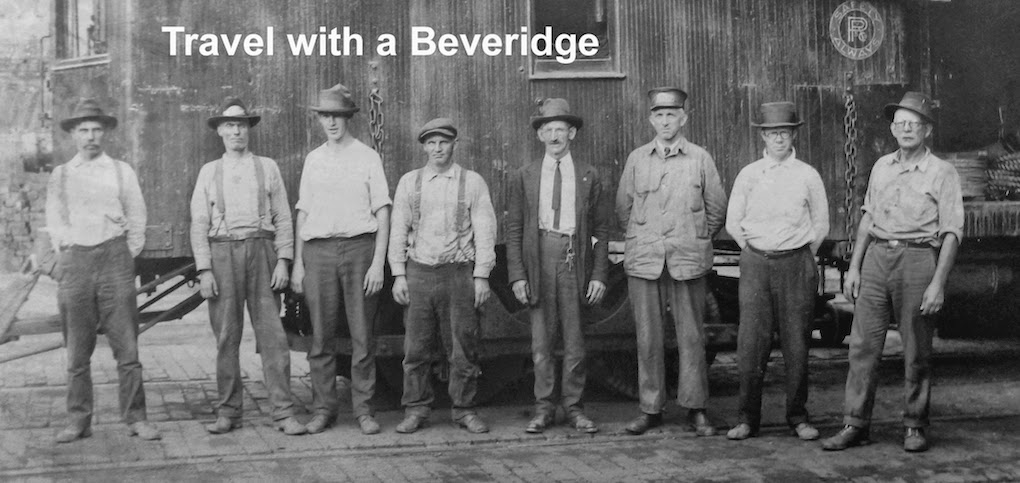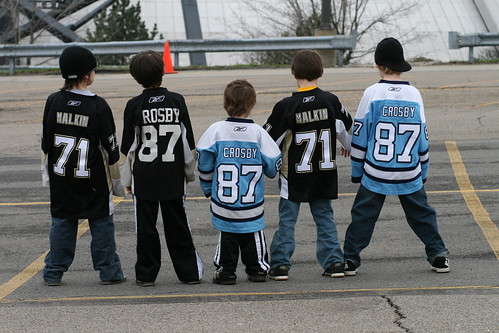 A silly Christmas card James R. Beveridge received while serving in the U.S. Army Quartermaster Corps during World War II.
A silly Christmas card James R. Beveridge received while serving in the U.S. Army Quartermaster Corps during World War II. Part V: On the edges of combat
By Scott Beveridge
My father arrived in Le Havre, France, during the second week of February 1945 with shattered nerves.
James R. Beveridge was then just 22 years old and assigned to perform office work for the U.S. Army’s 38th Infantry Regiment’s Quartermaster Corps. His unit would later set up tents to feed soldiers, as well as starving German refugees, sometimes serving baked beans for breakfast from clean galvanized steel garbage cans.
His unit soon marched across a U.S.-secured Normandy as more than 1,200 Allied bombers raided central Berlin. Dad said he worried all along that he would soon be called into combat.
“If the troops were trapped, you had to put down the typewriter and grab a gun and fight,” he said.
“If they overran that front line, then everyone was fighting, no matter who you were.”
Dad said he witnessed bombers en route to Germany so thick overhead that he could barely see the sky. He cheered the planes on, hoping they would bring a quick end to the war.
On April 4, 1945, his unit was dispatched to Dinslaken, a small industrial city in the Ruhr area of western Germany, a distance of two miles from the front line.
Meanwhile, American troops were marching through Germany, greeted by Germans waiving white flags of surrender.
The nights were frightening, pitch black with practically every window blind pulled shut in the houses and buildings. Frequent bombing raids had also taken out the electricity in many areas.
“You could see the shells like fireworks in the next city,” he said.
In a last-ditch effort to protect the Ruhr pocket, Nazi troops were sending “buzz bombs” across the sky toward England, dad said. “They sounded like motorboats.”
Many of the bombs malfunctioned and fell to the ground, hitting the wrong targets.
But, within a month, the war with Germany was over.
“The surrender traveled by word of mouth,” dad said. “Everybody cheered. They wanted to go home.”
Yet, President Harry S. Truman warned America the war was only half won because heavy fighting was taking its toll on U.S. troops stationed in the South Pacific.
Looking back on his life, dad said he sometimes suffered a guilty conscience because he survived the war physically unharmed, having known that was not the case for many veterans. He often overlooked, too, the value of his unit, brushing it off as woman’s duty.
The Quartermaster Corps was under the command of Maj. Guy I. Rowe, who was awarded the Distinguished Service Cross for extraordinary heroism in France during World War I. The Corps’ main mission in dad’s war involved feeding, clothing, and equipping the troops.
Its members also were trained to fill specialized roles in every theater.
By the end of the war, the corps had handled 70,000 different supply items and prepared and served nearly 24 million meals.
It also had been assigned the grim task of burying nearly 250,000 bodies in temporary graves. Meanwhile, 4,900 corps soldiers were killed in battle.
Dad said he found himself sorting mail in England, refueling vehicles and clearing out houses in bombed out houses in Holland and Germany to make them temporary barracks for his commanders.
“If the platoon sergeant said he wanted that house to stay in, we threw out all of the furniture, put the furniture in the yard to make room for cots,” he said. “We destroyed it. The American people didn’t give a shit.”
He said he never fully understood how the army determined which soldiers carried weapons into battle or how others like him were spared such duty.
“I didn’t understand it then and I don’t understand it now,” he said in 2005. “I was lucky. That’s the only word for it.”
After Germany fell to the Allies, he relaxed in the South of France where he was able to swim daily in the Mediterranean Sea.
The vacation wouldn’t last long because his orders soon called for him to board The Ainsworth on July 15, 1945, to backup troops a world away. The merchant ship was about to join a massive convoy of military vessels to assist in a war halfway around the globe against Japan.
(Click here to return to Part 1: Preparing for a battle dad would never see)
(Click here to move on to Part VI: The second war ends)
(This oral history was written in 2005 to fulfill my graduate studies at Duquesne University in Pittsburgh. It is being edited and published here as a series.)






































